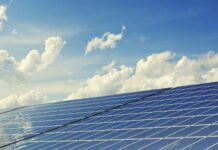In the vast tapestry of our environment, temperature plays a pivotal role. It influences ecosystems, dictates weather patterns, and impacts our daily lives in myriad ways. To understand and harness the power of temperature, scientists and researchers have delved deep into the world of temperature recording. This article sheds light on this fascinating domain and underscores the significance of temperature recording in unlocking environmental clues.
The Basics of Temperature Recording
At its core, temperature recording is the process of capturing and documenting temperature variations over a specific period. This can range from recording daily temperatures in a specific location to tracking temperature changes in oceans over decades. The tools and techniques employed for temperature recording have evolved, from rudimentary mercury thermometers to sophisticated digital sensors.
Why is Temperature Recording Important?
Understanding Climate Change: One of the most pressing global concerns is climate change. Temperature recording provides invaluable data that helps scientists understand global warming trends, melting ice caps, and rising sea levels. By analyzing temperature records, researchers can make predictions and recommend strategies to mitigate the adverse effects of climate change.
Agriculture and Food Security: Temperature directly impacts crop growth and health. By recording and analyzing temperature patterns, farmers can optimize planting and harvesting schedules, ensuring food security and sustainable agriculture.
Health and Disease Control: Many diseases, especially vector-borne ones like malaria, are influenced by temperature. Temperature recording aids in predicting disease outbreaks and strategizing public health interventions.
Conservation Efforts: For conservationists, understanding temperature patterns is crucial. It helps in the preservation of endangered species whose habitats might be sensitive to temperature changes.
Modern Tools and Techniques in Temperature Recording
The keyword in modern temperature recording is “precision.” Today’s tools are designed to capture even the minutest temperature variations with utmost accuracy.
Digital Thermometers: These have largely replaced their mercury counterparts. They offer quick readings, are safer, and can be integrated with other digital systems for comprehensive environmental monitoring.
Thermal Imaging Cameras: These cameras capture temperature variations visually, allowing researchers to see hot and cold spots. They’re especially useful in detecting heat loss in buildings or monitoring wildlife.
Data Loggers: These are compact devices that record temperature over extended periods. They’re often used in remote locations, from deep-sea expeditions to polar research stations.
Satellite-based Temperature Recording: Satellites equipped with thermal sensors can record temperature data on a global scale, providing insights into large-scale environmental patterns.
Unlocking Clues from the Past
Temperature recording isn’t just about the present. By studying historical temperature records, scientists can unlock clues about past climatic events, like ice ages or periods of intense volcanic activity. Ice cores, tree rings, and sediment layers all contain temperature records that, when deciphered, offer a glimpse into our planet’s climatic history.
Challenges in Temperature Recording
While the field has seen significant advancements, it’s not without challenges:
Data Accuracy: Ensuring consistent accuracy across various devices and locations is crucial. Calibration becomes a vital aspect of temperature recording.
Data Overload: With the plethora of devices recording temperature data around the clock, managing and analyzing this data becomes a herculean task.
Remote Locations: Some of the most critical temperature recording happens in remote locations, like deep-sea vents or high-altitude glaciers. Ensuring device durability and data transmission in such locations is challenging.
The Future of Temperature Recording
As technology continues to evolve, so will the methods and tools for temperature recording. We can anticipate:
Integration with AI: Artificial intelligence will play a significant role in analyzing temperature data, making predictions, and even suggesting interventions.
IoT (Internet of Things) in Temperature Recording: Devices will be interconnected, allowing for real-time data sharing and analysis. This will be especially beneficial for large-scale monitoring, like tracking urban heat islands or forest temperatures.
Enhanced Portability: As devices become more compact and battery-efficient, temperature recording in remote or challenging environments will become more feasible.
The Broader Implications of Temperature Recording
Beyond the immediate scientific and environmental applications, temperature recording has broader implications for various sectors and our society at large.
- Economic Impact:
Temperature fluctuations can have significant economic consequences. For instance, unexpected cold snaps can damage crops, leading to increased prices for essential commodities. Conversely, a warmer winter can reduce heating costs for many households. By accurately recording and predicting temperature trends, businesses and governments can better prepare for these economic shifts.
- Urban Planning and Infrastructure:
As urban areas continue to expand, city planners are increasingly relying on temperature recording to design sustainable cities. Temperature data can guide decisions about where to plant trees for shade, how to design buildings for energy efficiency, and where to place essential infrastructure to withstand extreme weather events.
- Energy Sector:
Temperature recording is crucial for the energy sector, especially renewable energy sources. Solar panels, for instance, have optimal operating temperatures, and wind turbine efficiency can be influenced by temperature. Accurate temperature data ensures that these renewable energy sources are utilized to their fullest potential.
- Transportation and Logistics:
Everything from flight paths to road conditions can be influenced by temperature. Accurate temperature recording can help in predicting foggy conditions, icy roads, or other weather phenomena that can disrupt transportation.
- Public Awareness and Education:
As the public becomes more aware of climate change and its implications, temperature recording data can serve as a powerful educational tool. Visual representations of rising global temperatures or interactive exhibits showcasing historical temperature data can drive home the reality and urgency of climate change.
The Ethical Dimension of Temperature Recording
With the proliferation of temperature recording devices, especially in urban settings, there’s an emerging discussion about privacy and ethics. While these devices primarily record environmental data, they can sometimes inadvertently capture personal information. As the field advances, striking a balance between comprehensive data collection and respecting individual privacy will be paramount.
Final Thoughts
The world of temperature recording is a testament to humanity’s quest for understanding and mastery over its environment. Every temperature data point, whether from the remote Arctic tundras or bustling urban centers, contributes to a larger narrative about our planet’s past, present, and future.
As we stand at the crossroads of technological advancement and environmental stewardship, temperature recording will undoubtedly play a pivotal role. It’s not just about numbers or graphs; it’s a tool that, when wielded with care, precision, and foresight, can guide us toward a more informed, sustainable, and harmonious relationship with our planet.








